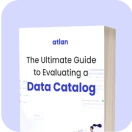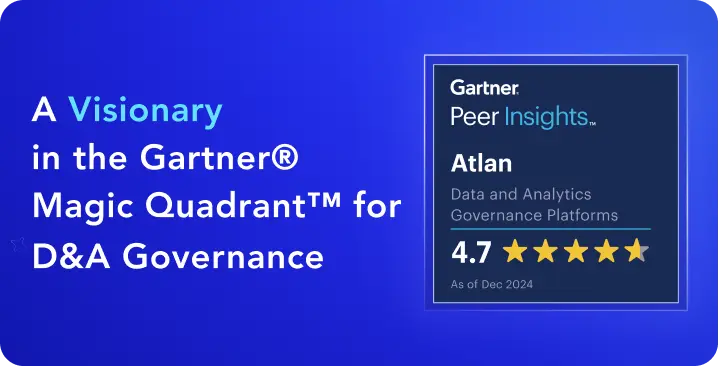Data Security and Compliance: Essential Strategies for 2025
Share this article
What is data security and compliance, and why is it important? #
Data security and compliance refer to the measures, policies, and technologies organizations use to protect sensitive information from unauthorized access while ensuring adherence to legal and regulatory standards like GDPR, HIPAA, and CCPA. Securing data is crucial for avoiding breaches, legal penalties, and reputational damage, which can significantly harm a business.
Why Data Security and Compliance Matter:
- Regulatory compliance: Avoid penalties by adhering to laws like GDPR and HIPAA.
- Data protection: Safeguard sensitive information from cyber threats and unauthorized access.
- Operational stability: Ensure smooth business operations through regular monitoring.
- Trust and reputation: Build customer confidence with responsible data management practices.
- Market growth: Facilitate business expansion by meeting compliance standards in new markets.
Simplify Compliance with Atlan – Start Product Tour
In this article, we’ll look at the importance of enterprise data security and compliance, emerging trends, top challenges, and the transformative role of embedded data governance.
Table of Contents #
- What is data security and compliance?
- Understanding data security and compliance
- Why is data security and compliance critical for enterprises?
- Data security and compliance trends for 2025: How enterprises are adapting their data landscapes
- Data security and compliance: Common challenges enterprises face
- How a unified control plane embeds governance into every data security and compliance workflow
- How Atlan enables data security and compliance
- Strengthening data security and compliance in 2025: Bottom line
- FAQs on data security and compliance
- Data security and compliance: Related reads
Understanding data security and compliance #
Data security and compliance involve a set of practices, technologies, and policies designed to protect sensitive information and ensure that organizations comply with relevant regulations. Data security focuses on preventing unauthorized access and breaches, while data compliance ensures that data handling follows the legal and ethical standards required by industry regulations.
Together, these practices help enterprises manage information responsibly, fostering trust and reducing risks.
Why data security and compliance are critical for enterprises #
The importance of data security and compliance can be seen in several key areas:
- Regulatory compliance: Ensures adherence to legal standards like GDPR, HIPAA, and CCPA, avoiding hefty fines and legal consequences.
- Data protection: Shields sensitive and business-critical data from cyber threats and unauthorized access.
- Reputation and trust: Builds customer and partner confidence through robust data management practices.
- Risk management: Reduces exposure to security risks through ongoing audits and monitoring.
- Business growth: Facilitates expansion into new markets by meeting compliance and data security standards.
- Informed decision-making: Enhances data reliability and accuracy, leading to better insights and business decisions.
Case Study: Slim CD’s Data Breach
In 2024, Slim CD, a payment gateway provider, experienced a significant data breach that compromised the payment information of 1.7 million customers. Weak data security and compliance measures allowed the breach to go undetected for nearly a year, exposing sensitive details such as card numbers, expiration dates, names, and addresses.
This breach resulted in severe operational disruptions, hefty compliance penalties, and reputational damage, ultimately causing customer attrition and lost partnerships. PwC’s 2022 Consumer Intelligence Series Survey on Trust found that 87% of consumers would take their business elsewhere if they did not trust a company to handle their data responsibly.
Data security and compliance trends for 2025: How enterprises are adapting their data landscapes #
The data security and compliance landscape is always evolving, but 2025 may prove to be the most transformative year yet. Let’s look at the biggest data security and compliance trends:
- Incoming regulations
- Evolving security threats
- Integrating automation and AI for data security and compliance
Incoming regulations #
Governments and regulatory bodies worldwide are tightening data protection laws, introducing stricter rules around data privacy, cross-border data transfers, and security frameworks.
For instance, California’s SB 1047 introduces new consumer protections, while the EU AI Act mandates strict controls for high-risk AI systems.
Meanwhile, under the UK’s incoming AI framework, an AI company developing a healthcare algorithm may need to conduct regular risk assessments, ensure explainability of decisions (like how a diagnosis was made), and submit to periodic audits to verify compliance.
Updates to GDPR guidelines and US privacy laws are also on the way, requiring enterprises to refine their data governance and compliance strategies.
Evolving security threats #
As cyber threats become more advanced, organizations must adopt proactive and adaptive security measures to protect their digital assets. Today, threats include AI-powered attacks, complex ransomware schemes, and highly targeted phishing campaigns that exploit human vulnerabilities.
Additionally, quantum computing’s potential to break traditional encryption is becoming a pressing concern. Deloitte’s Risk & Financial Advisory managing director for Colin Soutar recently proclaimed that this is “the start of the race” against quantum computing) and the security threats it can pose.
“Today’s public-key cryptographic algorithms, upon which much of the security of today’s internet rests, could be rendered ineffective when cybercriminals and nation-state actors gain access to quantum computing capabilities—expected by many to become available in the next decade or so.” - 2023 Quantum Threat Timeline Report by Global Risk Institute
Also, read → Gartner’s latest research on data governance for future-forward enterprises
Integrating automation and AI for data security and compliance #
AI is reshaping compliance and risk management practices by automating risk assessments, enabling real-time monitoring, and detecting anomalies before they escalate.
Intelligent systems continuously monitor data flows, classify and tag sensitive information based on its importance, and enforce regulatory policies without the need for constant manual oversight, reducing the workload on teams and ensuring that compliance processes run smoothly.
This trend is already emerging, with 88% of cyber security professionals revealing that they’re already seeing AI impact their existing roles, with most seeing positives in the form of improved efficiency despite concerns over redundancy of human tasks.
As AI itself comes under increasing regulation, enterprises must build internal governance frameworks for these models, ensuring they operate according to ethical standards and maintain transparency. This comprehensive approach improves the AI-readiness of data estates and strengthens stakeholder trust in secure and compliant systems.
Also, read → Gartner’s take on AI governance
What are the common challenges enterprises face in data security and compliance? #
Enterprises today are navigating an increasingly complex landscape of data security and compliance, made more challenging by the rapid pace of technology evolution and emerging regulations addressing areas like AI. Below are the top 10 challenges they face:
- Complex Regulatory Landscape The growing number of data protection laws, such as GDPR, HIPAA, and new AI-specific regulations, creates significant complexity. Enterprises must stay compliant across different regions and industries, which can be overwhelming.
- Legacy System Incompatibility Many organizations still rely on legacy systems that are not equipped to work with modern security and compliance tools, leaving gaps in their defenses and creating blind spots in data visibility.
- Fragmented Data Environments Enterprises often deal with data silos, where information is stored in different systems with limited integration. This fragmentation can lead to visibility gaps, making it difficult to maintain consistent security and compliance practices across all data assets.
- Multi-Cloud and Hybrid Infrastructure Complexity Managing security across multiple cloud providers or hybrid infrastructures introduces additional layers of complexity. The diverse environments require tailored security strategies, and a lack of unified control increases vulnerability.
- Manual Processes and Policy Enforcement A reliance on manual tasks for enforcing security policies leads to inefficiency and inconsistency, making it harder for organizations to maintain rigorous security standards, particularly at scale.
- Inconsistent Access Controls When access control policies are inconsistently applied across systems, sensitive data becomes vulnerable to unauthorized access. This inconsistency poses significant compliance risks.
- Data Classification Issues Incorrectly labeling or categorizing data can lead to compliance failures. Enterprises often struggle with the proper classification of sensitive information, increasing the risk of non-compliance with data protection laws.
- Inefficient Incident Response Inadequate incident response and recovery processes can prolong the impact of data breaches, resulting in longer downtime, greater operational disruption, and increased financial loss.
- Vendor and Supply Chain Risks Gaps in security within the supply chain or with third-party vendors pose additional risks. Enterprises must ensure that their partners adhere to security and compliance standards to prevent data breaches.
- AI Compliance and Ethical Standards Ensuring AI models are transparent, ethical, and compliant with evolving regulations adds a layer of complexity. As enterprises adopt AI technologies, they must ensure these systems adhere to both ethical and compliance standards, which can be difficult given the lack of clear guidelines.
How a unified control plane embeds governance into every data security and compliance workflow #
Embedded governance integrates security and compliance controls directly into the technology and processes, ensuring that policies are automated and enforced at every level rather than relying on static documentation.
A unified control plane for data serves as the single interface for managing policies, monitoring data flows, and enforcing compliance rules across diverse environments, including legacy systems.
Also, read → The unified control plane in action
It ties embedded governance into a cohesive ecosystem by:
- Centralizing visibility: Offering a single view of data assets, metadata, and AI processes to streamline governance and security efforts
- Ensuring consistency: Applying uniform policies and controls across the entire data lifecycle, from ingestion to AI model deployment
- Automating enforcement: Enabling real-time monitoring, risk assessments, and policy implementation using integrated tools and automated workflows
- Enhancing accountability: Providing traceability and auditability across data, metadata, and AI operations to support ongoing regulatory and ethical standards.
Data security and compliance with Atlan: Core capabilities #
Atlan is building a control plane for the data and AI stack, integrating trust and context into the digital fabric.
Its next-generation platform for data and AI governance stitches disparate data infrastructure together via cataloged metadata. As a result, data and business teams can find, trust, and govern AI-ready data.
- AI-ready data governance: Atlan streamlines data discovery and governance, ensuring that your data estate is AI-ready – secure and compliant with evolving standards.
- Automated risk and compliance management: Intelligent automation continuously monitors data flows, classifies sensitive information, and enforces regulatory policies in real time, reducing manual intervention.
- Enhanced data context: By enriching data with business context, Atlan’s integrated metadata layer enables more informed decision-making and easier traceability.
- Automated data lineage: End-to-end, cross-system, column-level data lineage maps your entire data estate, enables in-line actions, propagates data masking policies, tags, and more.
- Seamless integration and interoperability with your data estate: Atlan connects with and unified data across warehouses, lakehouses, vector DBs, BI tools, and AI agents. This ensures consistent policy enforcement and a unified data ecosystem throughout the organization.
How Atlan enables data security and compliance: real use cases from top customers #
Tide: Fintech – Managing Personally Identifiable Information (PII) and GDPR Compliance
As a UK-based digital bank, Tide needed to strengthen its compliance with GDPR, particularly the “Right to be forgotten.” By working with Atlan, Tide automated the identification, tagging, and securing of personal data, significantly improving its ability to track PII across systems. This reduced the time spent on manual processes from 50 days to just a few hours. Atlan’s data lineage feature helped Tide visualize how PII was flowing through their systems, allowing them to secure data more effectively and meet compliance requirements with ease.
“Atlan helped us define and propagate PII definitions across systems, improving GDPR compliance and reducing manual work.” – Michal Szymanski, Data Governance Manager at Tide
Scripps Health: Healthcare – Maintaining Data Security in a Healthcare Setting (HIPAA Compliance)
Scripps Health needed to ensure compliance with HIPAA regulations while managing sensitive healthcare records securely. Atlan’s virtualized architecture, integrated with Snowflake, allowed Scripps to manage sensitive data without worrying about security breaches or compliance issues. Atlan provided Scripps with the ability to enforce strict data governance policies, ensuring that healthcare data was properly secured and handled according to regulatory requirements.
“We don’t have to worry about security or HIPAA sensitivity with Atlan’s Snowflake integration, which gives us peace of mind.” – Victor Wilson, Data Architect at Scripps Health
Postman: Technology – Managing Personally Identifiable Information (PII) with Data Lineage
As a technology company, Postman needed to ensure the proper handling and masking of PII across their data landscape. Using Atlan, they implemented data lineage to trace PII across systems, enabling better visibility into where sensitive information resides. This visibility allowed Postman to ensure compliance with privacy regulations by ensuring that all personal data is properly masked and secured, reducing risks related to unauthorized access or data breaches.
“Atlan’s data lineage allowed us to easily locate all PII in our warehouse, ensuring it’s being masked and secured correctly.” – Postman Team
Explore how your organization can easily control access, manage PII, and ensure regulatory compliance with seamless integration into your existing systems.
Book your personalized Atlan demo ✨ today
Strengthening data security and compliance in 2025: Bottom line #
As regulatory pressure and security threats grow, enterprises must embed data security and compliance into daily operations. A unified approach that centralizes visibility, automates enforcement, and ensures real-time monitoring is essential to managing risk effectively.
A control plane for data enables consistent security practices across systems, reducing manual effort and improving accountability. By integrating governance directly into their data infrastructure, organizations can protect sensitive information, meet compliance requirements, and create a secure foundation for AI-ready data.
FAQs about data security and compliance #
What is the difference between data security and data compliance? #
Data security focuses on protecting sensitive information from unauthorized access or breaches, while data compliance ensures that an organization follows relevant regulations and industry standards (e.g., GDPR, HIPAA). Both are essential for protecting data and maintaining trust.
Why is data compliance important for businesses? #
Data compliance is important because it helps businesses avoid legal issues, fines, and reputational damage by ensuring adherence to regulations. It also fosters trust among customers and partners by demonstrating a commitment to responsible data management.
What are the biggest challenges enterprises face in data security? #
Key challenges include managing legacy systems, maintaining security across hybrid infrastructures, ensuring AI models meet ethical standards, and handling complex regulations that vary across regions.
How can AI improve data security and compliance? #
AI automates tasks like monitoring data flows, classifying sensitive information, and enforcing regulatory policies in real-time. This reduces the workload on teams, minimizes human errors, and ensures continuous compliance.
What happens if an enterprise fails to comply with data regulations? #
Non-compliance can result in heavy fines, legal actions, operational disruptions, and loss of customer trust. For example, GDPR violations can lead to penalties up to €20 million or 4% of annual global turnover, whichever is higher.
Data security and compliance: Related reads #
- What is Data Governance? Its Importance, Principles & How to Get Started?
- Data Governance and Compliance: An Act of Checks & Balances
- Data Governance and GDPR: A Comprehensive Guide to Achieving Regulatory Compliance
- Role of Data Catalog in Data Security: Why It Matters
- Data Privacy vs Data Security: How & Why They Aren’t Same?
- Data Governance vs Data Security: Nah, They Aren’t Same!
- Data Governance & Business Intelligence: Why Their Integration Matters and How It is Crucial for Business Success?
- Data Compliance Management in 2025
- Financial Data Governance: Strategies, Trends, Best Practices
- Achieving HIPAA Compliance with Data Governance
- BCBS 239 Data Governance: What Banks Need to Know in 2025
- BCBS 239 Compliance: What Banks Need to Know in 2025
- FRTB Compliance: Exploring the 6 Core Pillars, Benefits, Impact
- IFRS 17 Compliance: Requirements, Benefits & More
Share this article











